Ya. I consider it to be significant, too. It's one of those odd variants most people aren't aware of or they just think it's a Kenner, especially loose items.
Yes, the logo on the 1984 Tsukuda box is identical to the 1979 MPC kit:
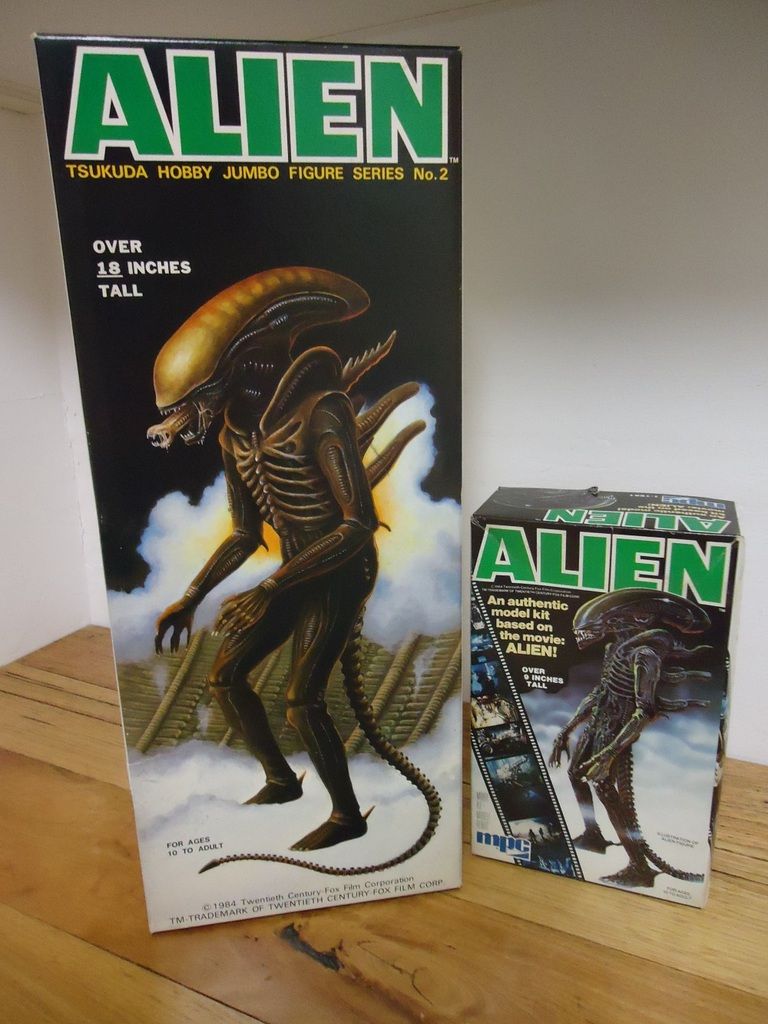
1984 Tsukuda figure (Left) and the 1979 MPC kit (Right). The title on each is exactly alike. I'm not exactly sure how many
times the MPC kit has been reissued. I know of the dual language French/English 1979 edition and the Japanese edition (Below).
It was also reprinted in 1984 and again in the 1990's. The 1990's edition has different box art. The original water color box art
was restored for the 2013 reissue which, of course, is still available at a decent price.
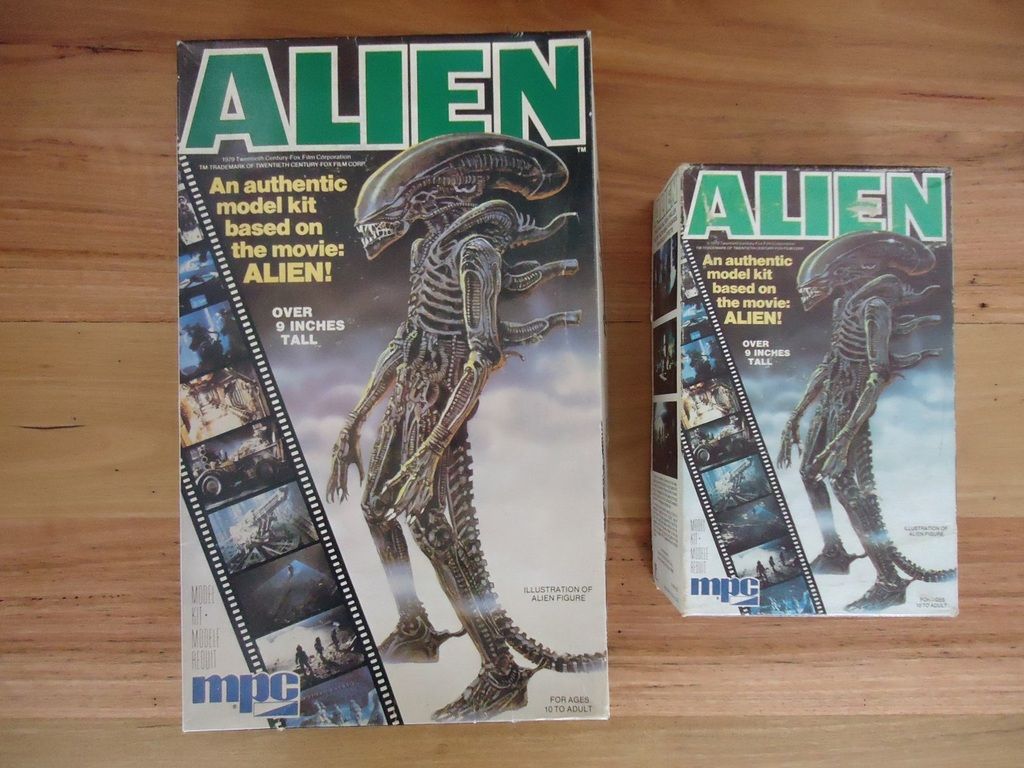
The 1979 Japanese (Left) and the 1979 US (Right) releases of the MPC 'ALIEN' kit. Yes. The Japanese version of the
box is twice the size. No, that does not mean the kit inside is a scaled up version of its sibling kit. There are actually
2 kits inside the box that are exactly identical to the US pressing. That's right, 2 copies of the same kit in the one
box.
As for the tail of the 1984 Tsukuda figure, it will bend; but the rod inside is very rigid. You can't exactly call it a wire core for this reason as the rod is resistant to bending. A good wire core will bend with ease and will have the ability to straighten out and return to its original shape without a problem. That can't be said for this figure's tail. You can bend it, alright; but straightening it, should you want to do so, will be extremely difficult.
For the photo of the Tsukuda figure next to its box above, I kind of cheated. I also own a loose 1991 Halcyon kit item and aside from some small differences, it is more or less a repressing of the earlier Tsukuda item. More so, the tails are identical in every way as they are cast from the same mold; but one significant detail is present. Halcyon used a proper flexible wire core for their iteration that works as intended. for the photo, I kept the Tsukuda straight rod core tail in its box and attached the Halcyon tail instead. Being easy to bend into shape, I could set it up exactly the same as it appears on the box. In appearance, it's exactly how the Tsukuda tail should function but fails to do so.
As for using a technique for actually attaching the tail, it will work the same way for both the Tsukuda and Halcyon figures. They are both made of vinyl and have the same method of attachment at the hip. To insert the tail stump into the socket you will need to heat it, so yes, you are on the right track. I gave up using hair dryers some time back. I found they heat unevenly, could damage the material and deform the figure. For this attachment, I'd boil some water and dip the tail stump into the pot. You don't need to immerse it for long - 10 seconds should be enough to soften the stump so it can be inserted. It will soften very quickly and be ready to manipulate into place. Just dip the very stump into the water, don't need to do more than that. Shove it in the refrigerator to accelerate the hardening. It's really no different to how I fix Kenner tails, in this regard. Hot water works.
The other reason I prefer this method is for ease of assembly. Using a hair dryer means you have to put down the tool, pick up the figure and also make sure its oriented correctly in order to insert the tail, wasting valuable time in the process giving the tail stump time to cool. Using boiling water method means you just set the pot on the stove and hold the tail in one hand and the figure in a properly oriented position ready to accept the tail in the other hand. Dip the tail into the pot and insert without juggling tools and body parts around. Quick. Easy. Works.
The other day I received a 2004 SEGA Alien figure in the mail. I'd bought it with the tail detached. It wasn't broken, it just had come free. I used the boiling water technique to successfully restore that one as well.
One thing I haven't tried but may be worth considering, is to maybe use a pair of needle nose pliers and remove the rod through the tail stump. You've probably already got a hole there through which the rod was originally inserted. You could theoretically insert a smaller gauge wire core yourself. Then you could keep the rod aside and straight; and reinsert it later should you want to restore the original condition. I'm not sure if this is possible to do but I'm willing to bet it can be done.
So yes. The very strange 1984 Tsukuda figure is anomalous but it's also such a weird and wonderful relic.
-Windebieste.
Yes, the logo on the 1984 Tsukuda box is identical to the 1979 MPC kit:

1984 Tsukuda figure (Left) and the 1979 MPC kit (Right). The title on each is exactly alike. I'm not exactly sure how many
times the MPC kit has been reissued. I know of the dual language French/English 1979 edition and the Japanese edition (Below).
It was also reprinted in 1984 and again in the 1990's. The 1990's edition has different box art. The original water color box art
was restored for the 2013 reissue which, of course, is still available at a decent price.

The 1979 Japanese (Left) and the 1979 US (Right) releases of the MPC 'ALIEN' kit. Yes. The Japanese version of the
box is twice the size. No, that does not mean the kit inside is a scaled up version of its sibling kit. There are actually
2 kits inside the box that are exactly identical to the US pressing. That's right, 2 copies of the same kit in the one
box.
As for the tail of the 1984 Tsukuda figure, it will bend; but the rod inside is very rigid. You can't exactly call it a wire core for this reason as the rod is resistant to bending. A good wire core will bend with ease and will have the ability to straighten out and return to its original shape without a problem. That can't be said for this figure's tail. You can bend it, alright; but straightening it, should you want to do so, will be extremely difficult.
For the photo of the Tsukuda figure next to its box above, I kind of cheated. I also own a loose 1991 Halcyon kit item and aside from some small differences, it is more or less a repressing of the earlier Tsukuda item. More so, the tails are identical in every way as they are cast from the same mold; but one significant detail is present. Halcyon used a proper flexible wire core for their iteration that works as intended. for the photo, I kept the Tsukuda straight rod core tail in its box and attached the Halcyon tail instead. Being easy to bend into shape, I could set it up exactly the same as it appears on the box. In appearance, it's exactly how the Tsukuda tail should function but fails to do so.
As for using a technique for actually attaching the tail, it will work the same way for both the Tsukuda and Halcyon figures. They are both made of vinyl and have the same method of attachment at the hip. To insert the tail stump into the socket you will need to heat it, so yes, you are on the right track. I gave up using hair dryers some time back. I found they heat unevenly, could damage the material and deform the figure. For this attachment, I'd boil some water and dip the tail stump into the pot. You don't need to immerse it for long - 10 seconds should be enough to soften the stump so it can be inserted. It will soften very quickly and be ready to manipulate into place. Just dip the very stump into the water, don't need to do more than that. Shove it in the refrigerator to accelerate the hardening. It's really no different to how I fix Kenner tails, in this regard. Hot water works.
The other reason I prefer this method is for ease of assembly. Using a hair dryer means you have to put down the tool, pick up the figure and also make sure its oriented correctly in order to insert the tail, wasting valuable time in the process giving the tail stump time to cool. Using boiling water method means you just set the pot on the stove and hold the tail in one hand and the figure in a properly oriented position ready to accept the tail in the other hand. Dip the tail into the pot and insert without juggling tools and body parts around. Quick. Easy. Works.
The other day I received a 2004 SEGA Alien figure in the mail. I'd bought it with the tail detached. It wasn't broken, it just had come free. I used the boiling water technique to successfully restore that one as well.
One thing I haven't tried but may be worth considering, is to maybe use a pair of needle nose pliers and remove the rod through the tail stump. You've probably already got a hole there through which the rod was originally inserted. You could theoretically insert a smaller gauge wire core yourself. Then you could keep the rod aside and straight; and reinsert it later should you want to restore the original condition. I'm not sure if this is possible to do but I'm willing to bet it can be done.
So yes. The very strange 1984 Tsukuda figure is anomalous but it's also such a weird and wonderful relic.
-Windebieste.



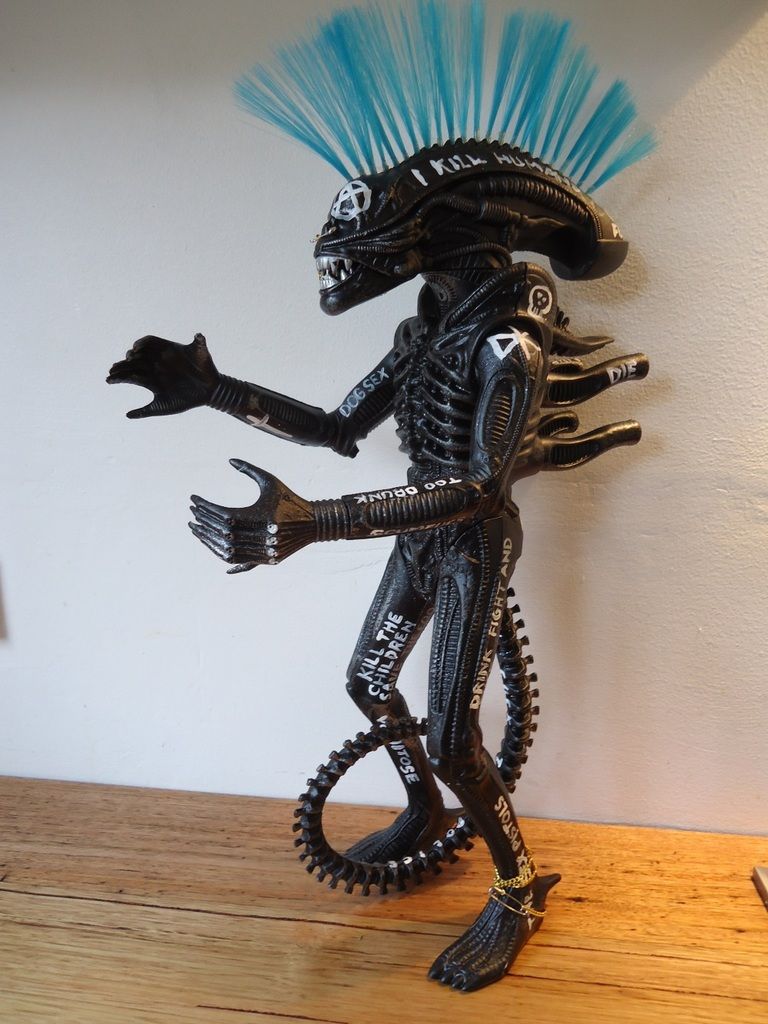
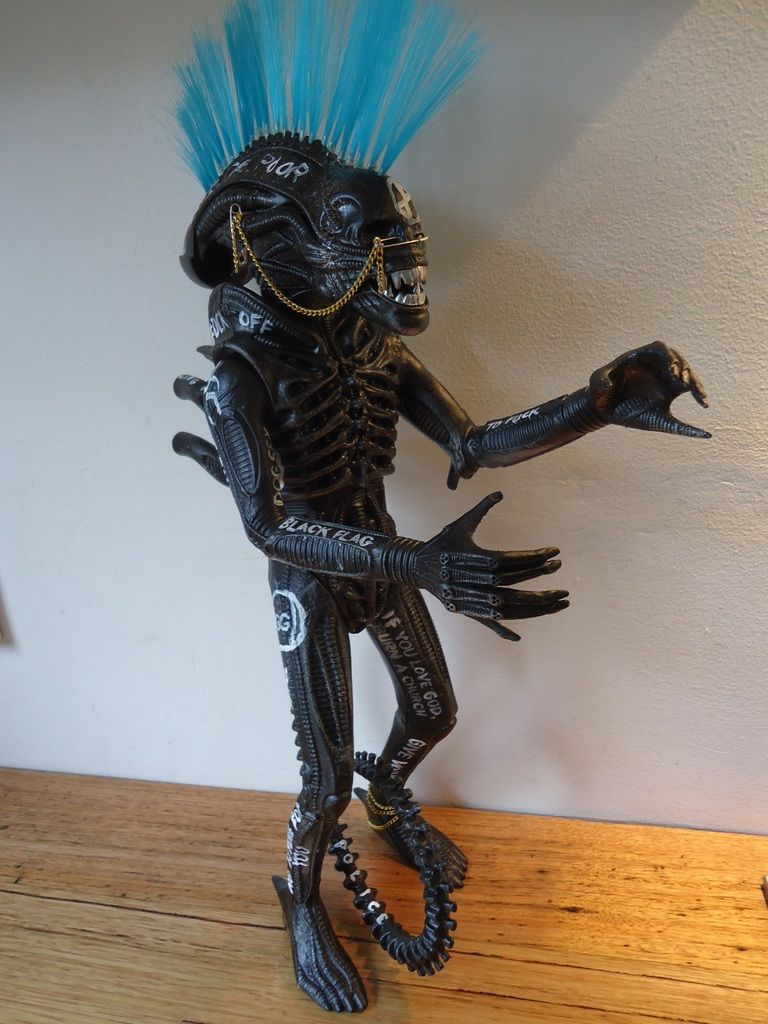
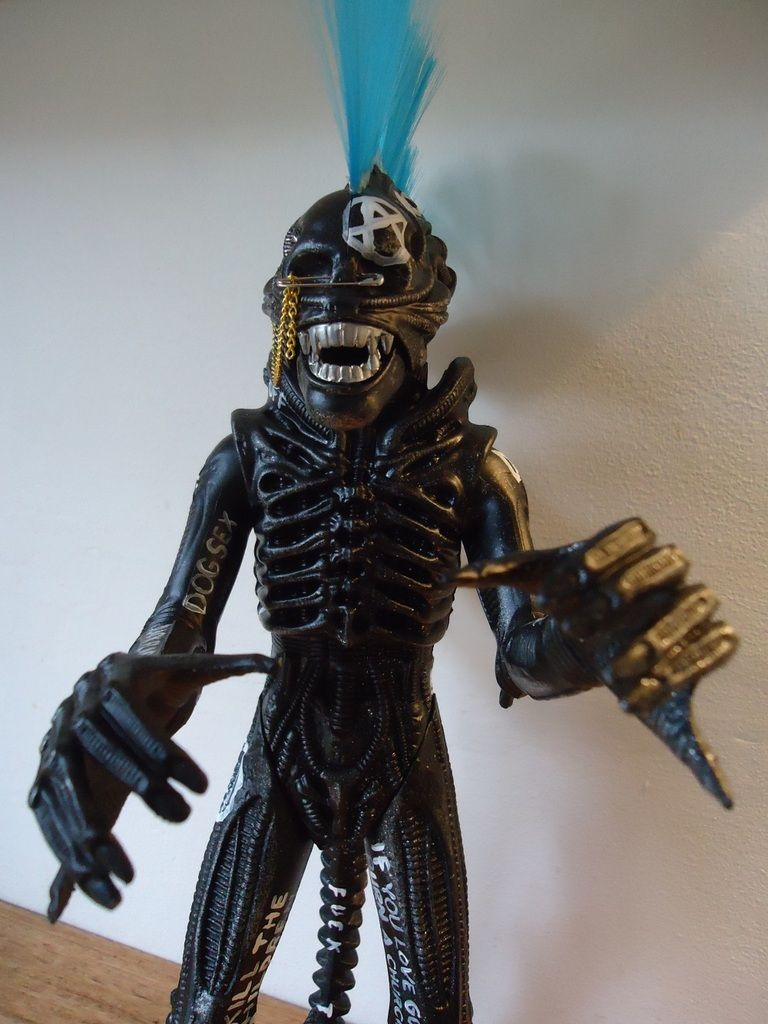
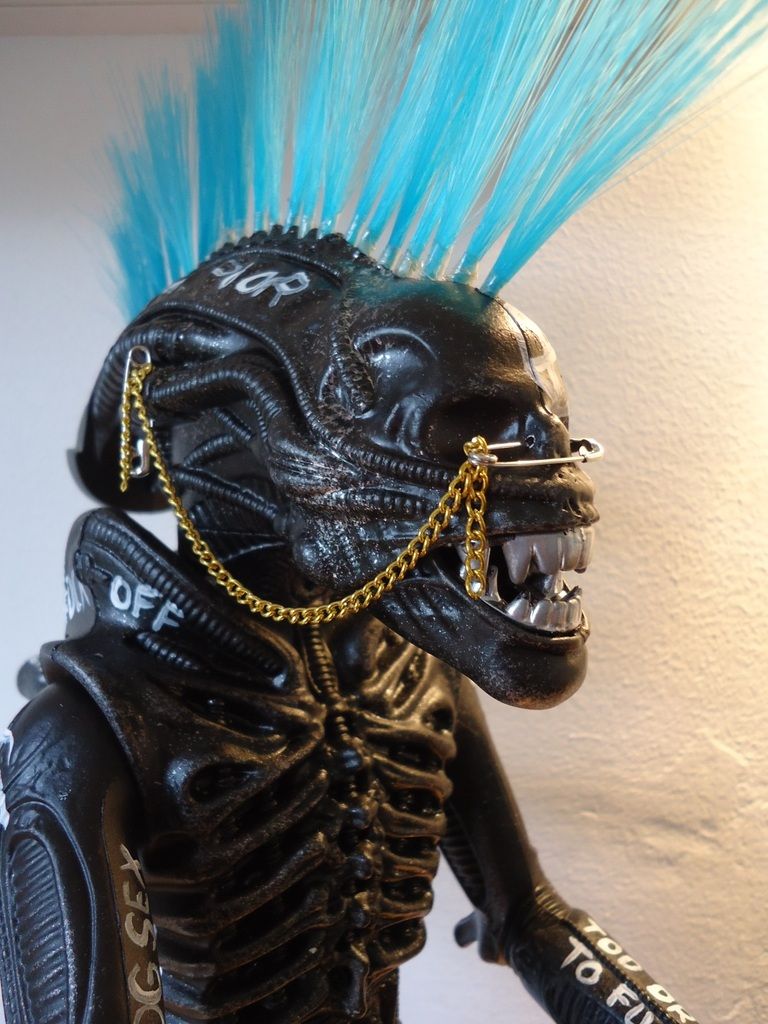

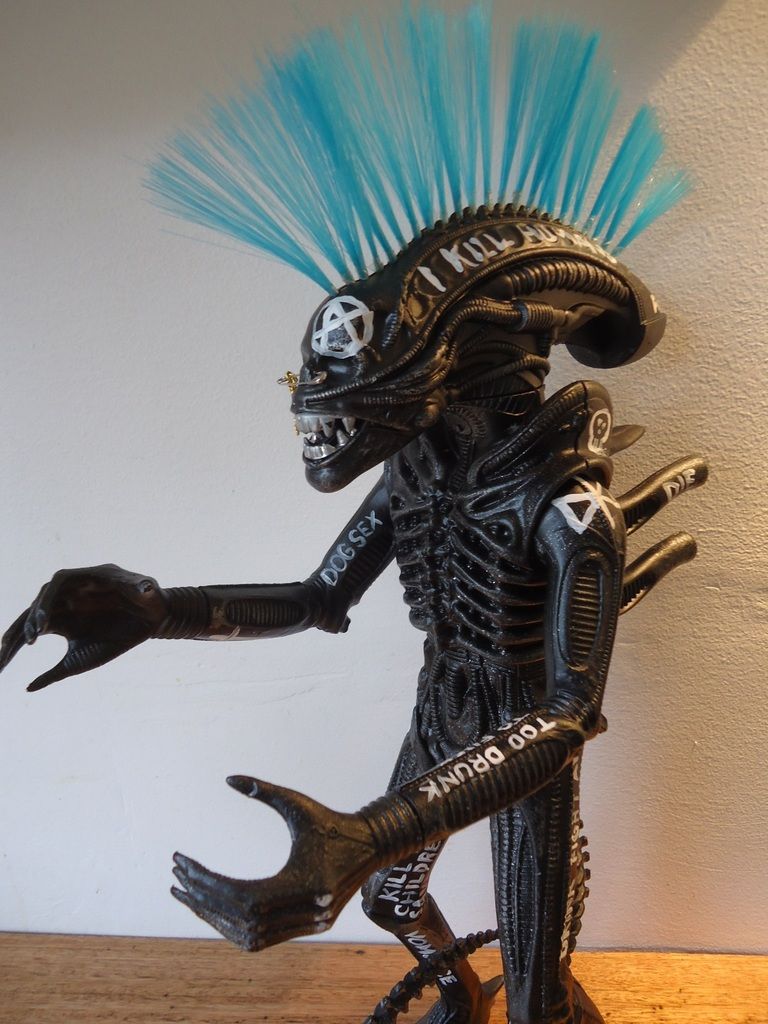

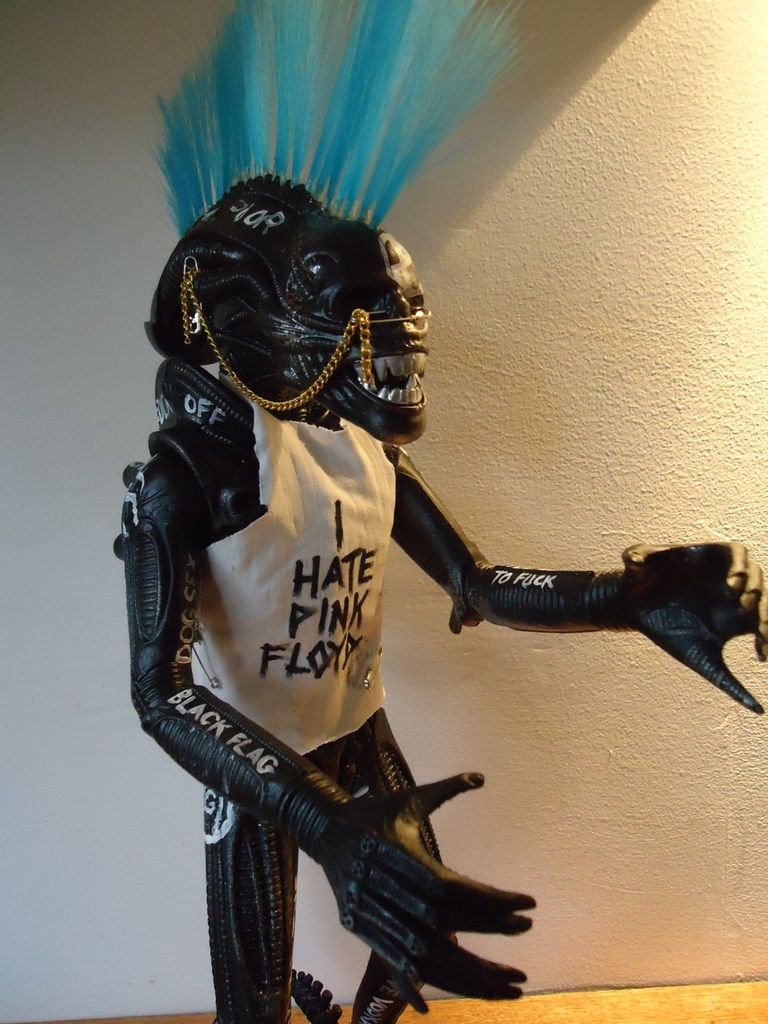

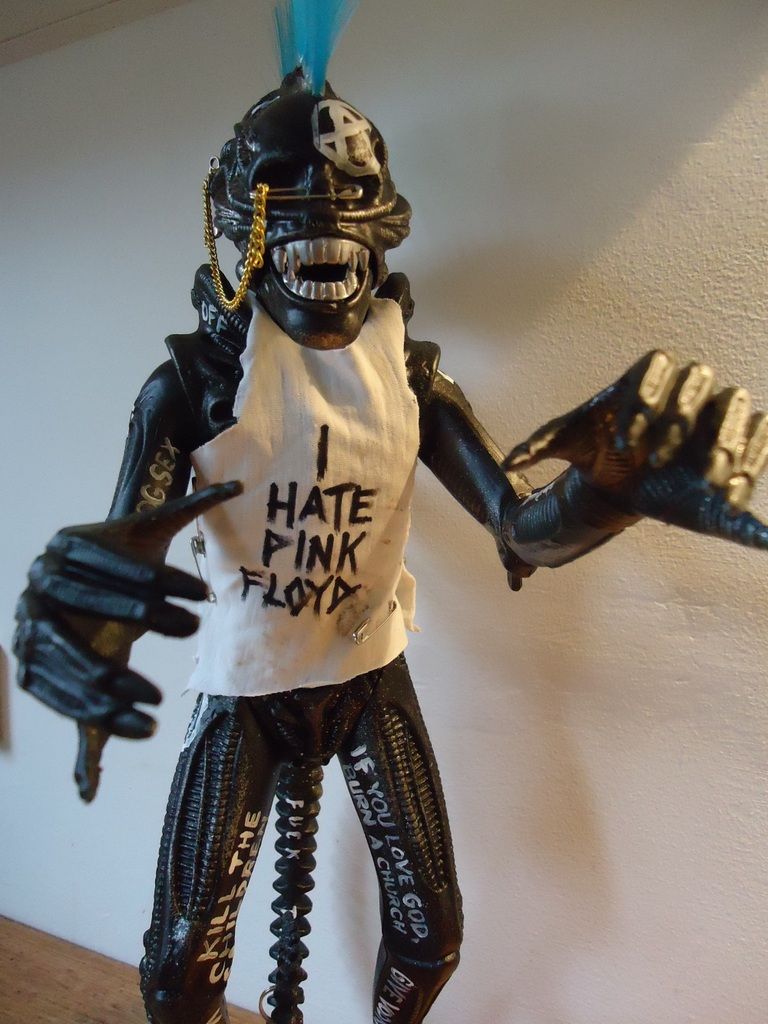
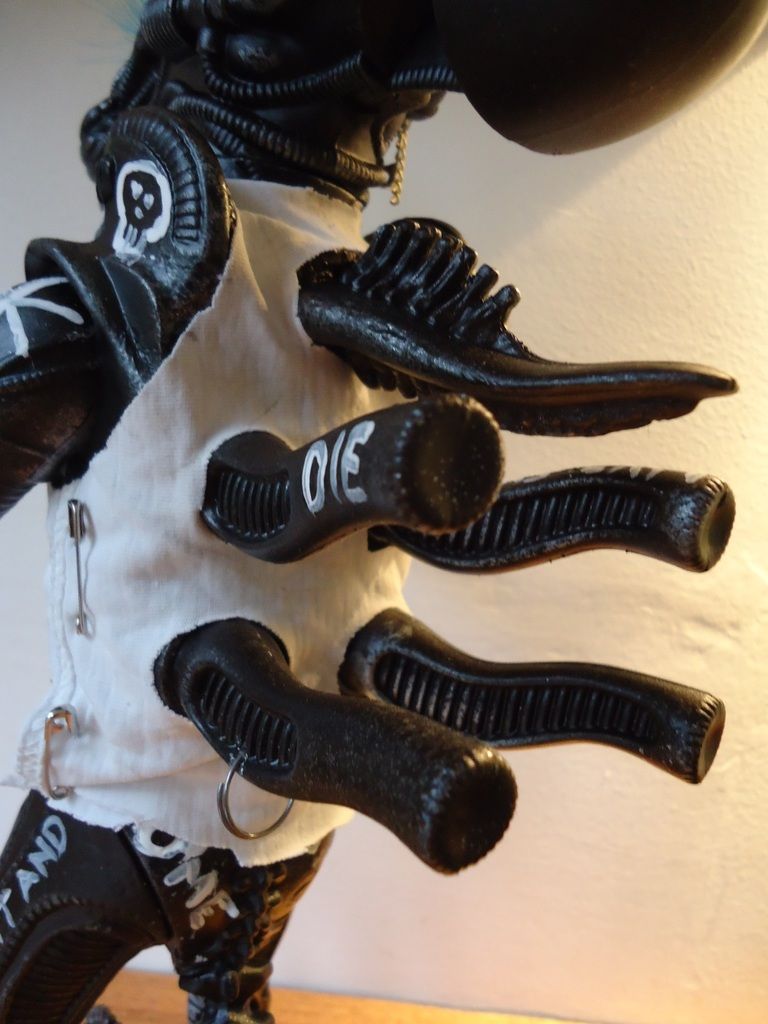
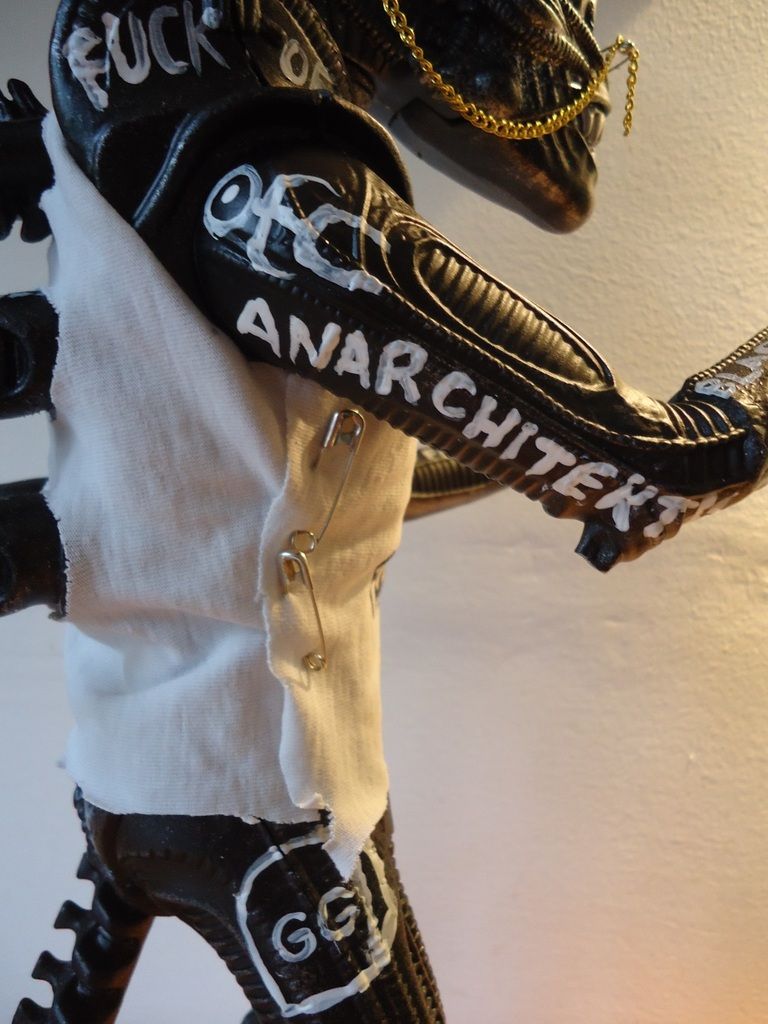
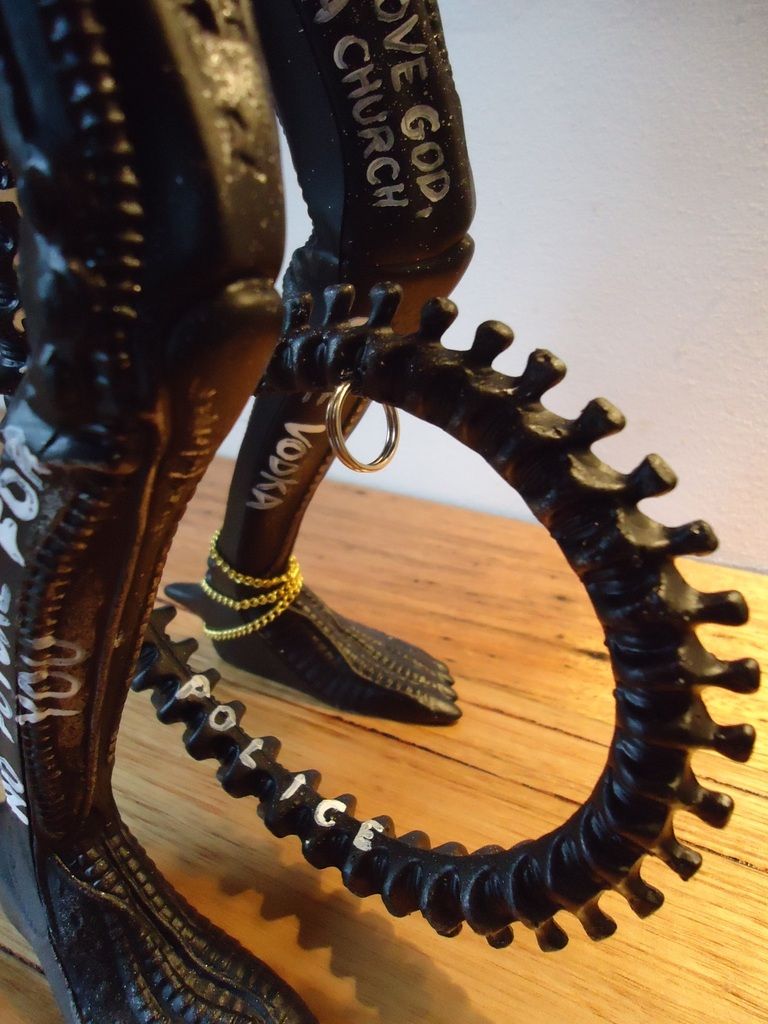
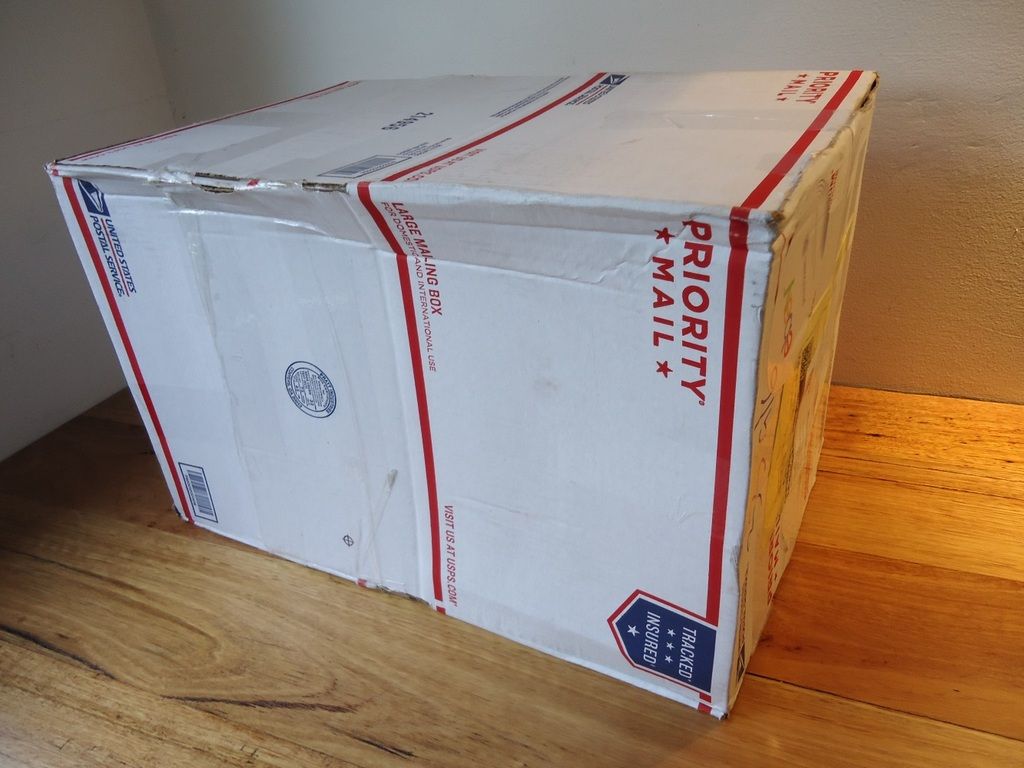



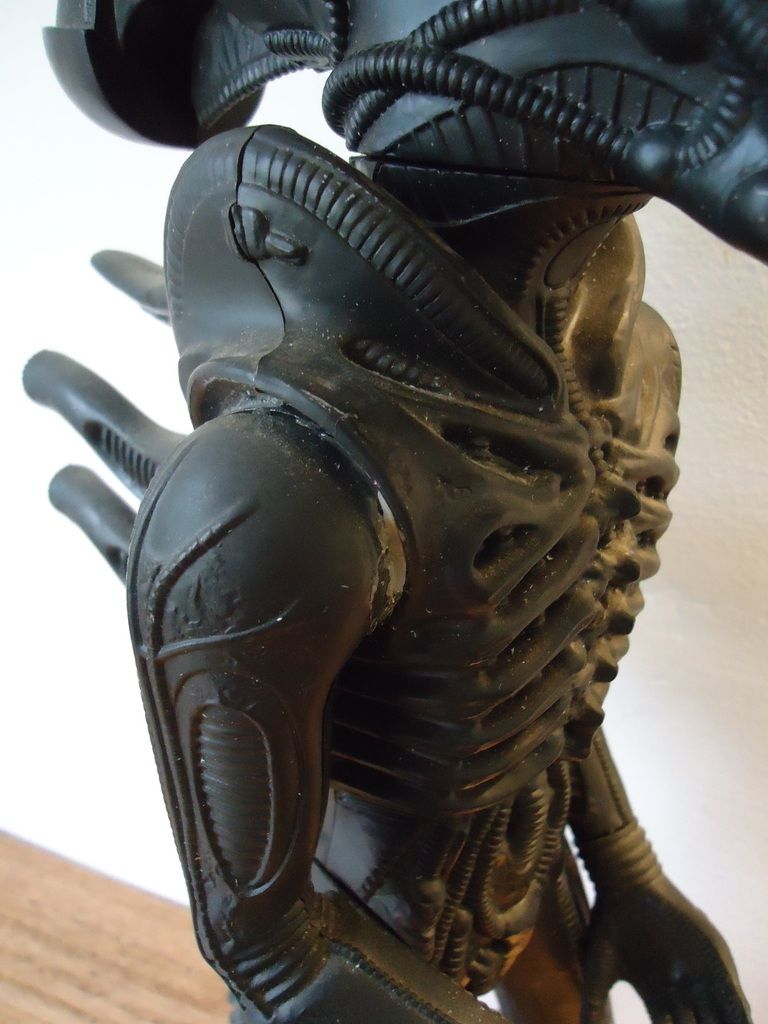
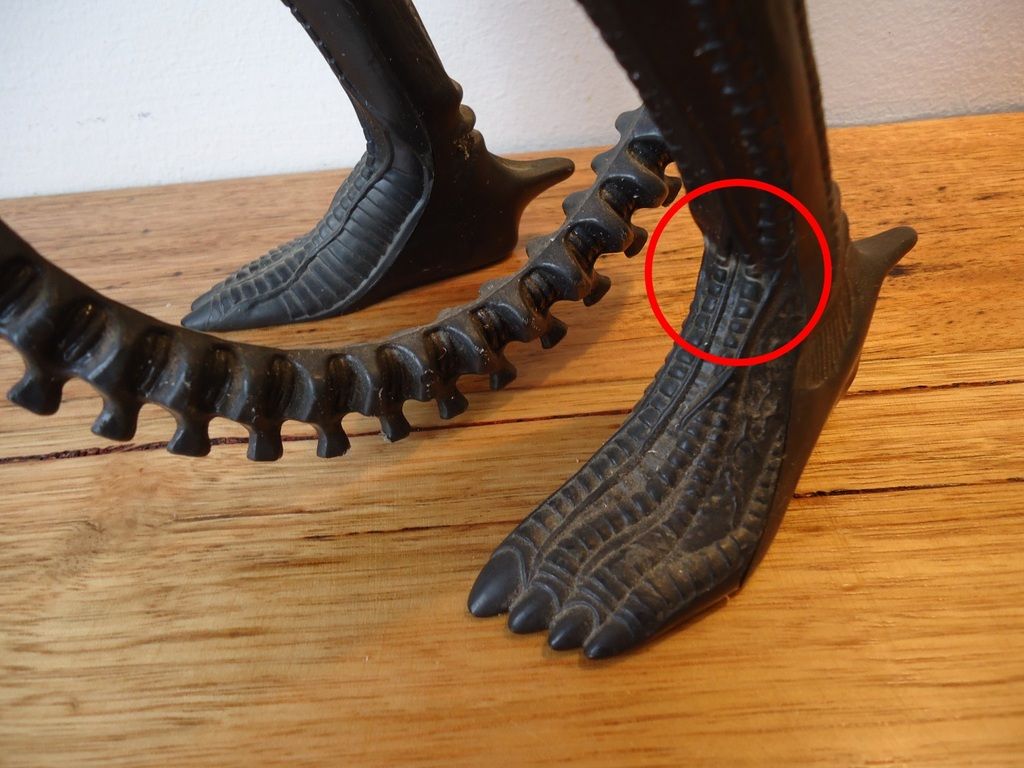
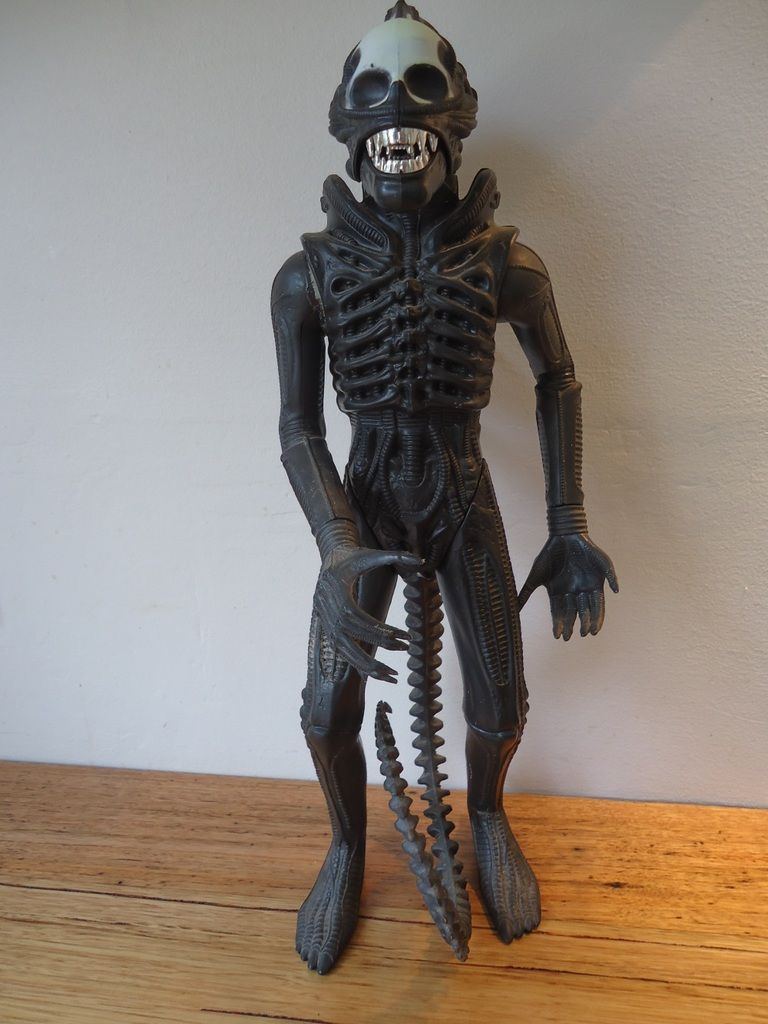

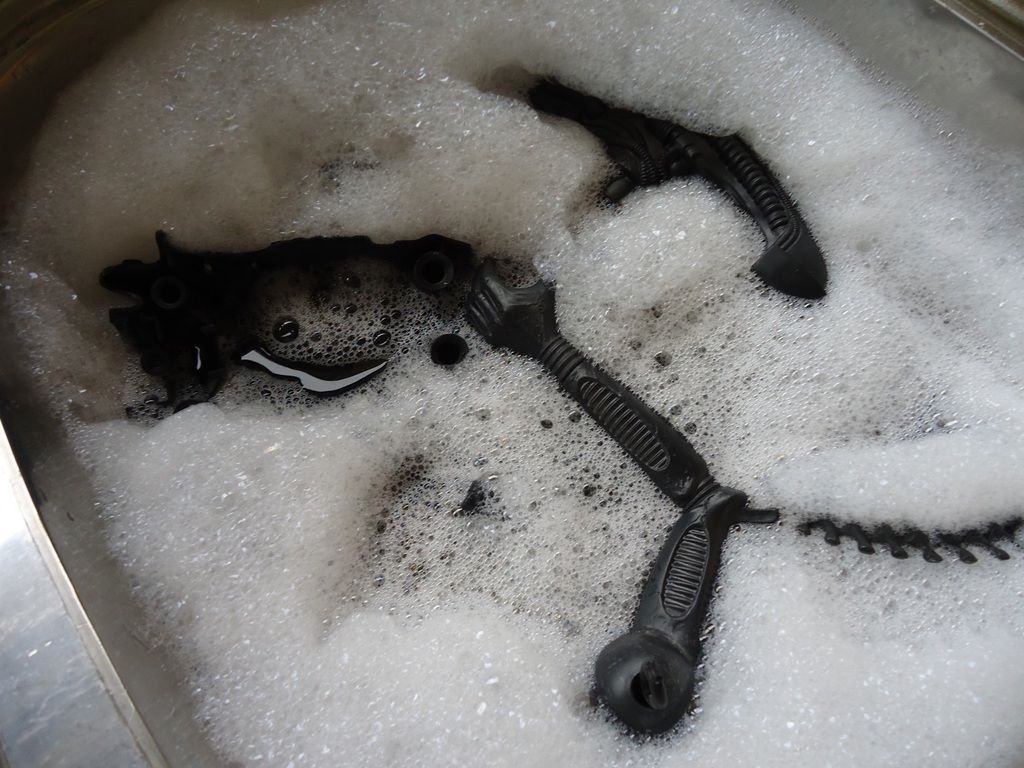
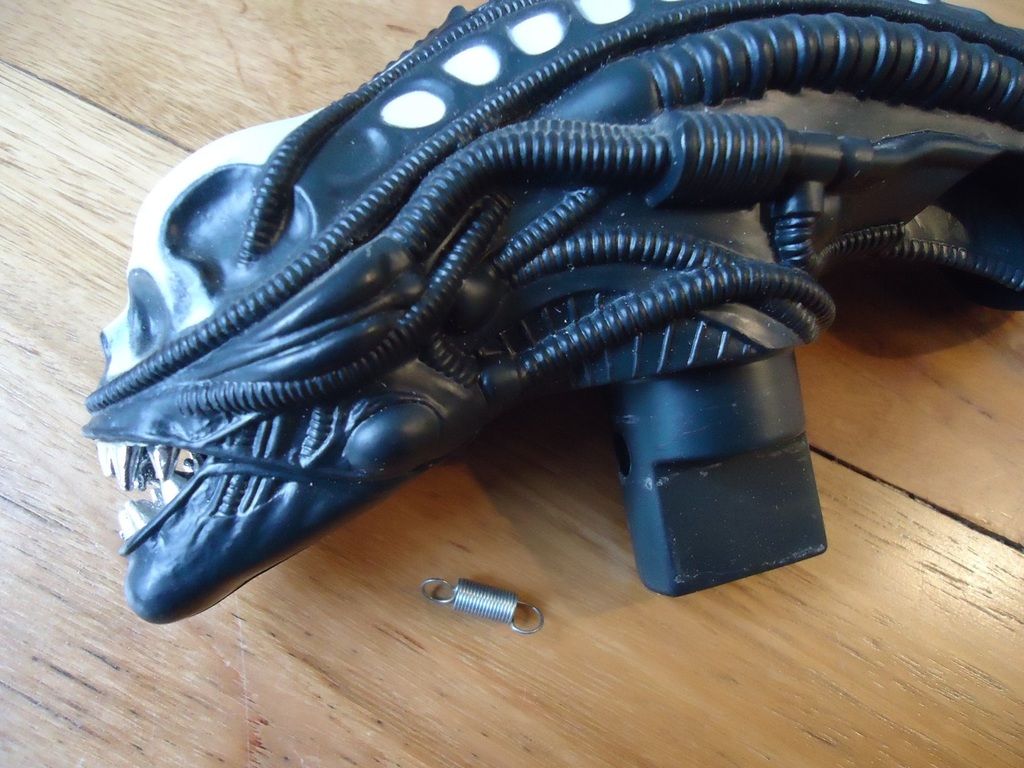

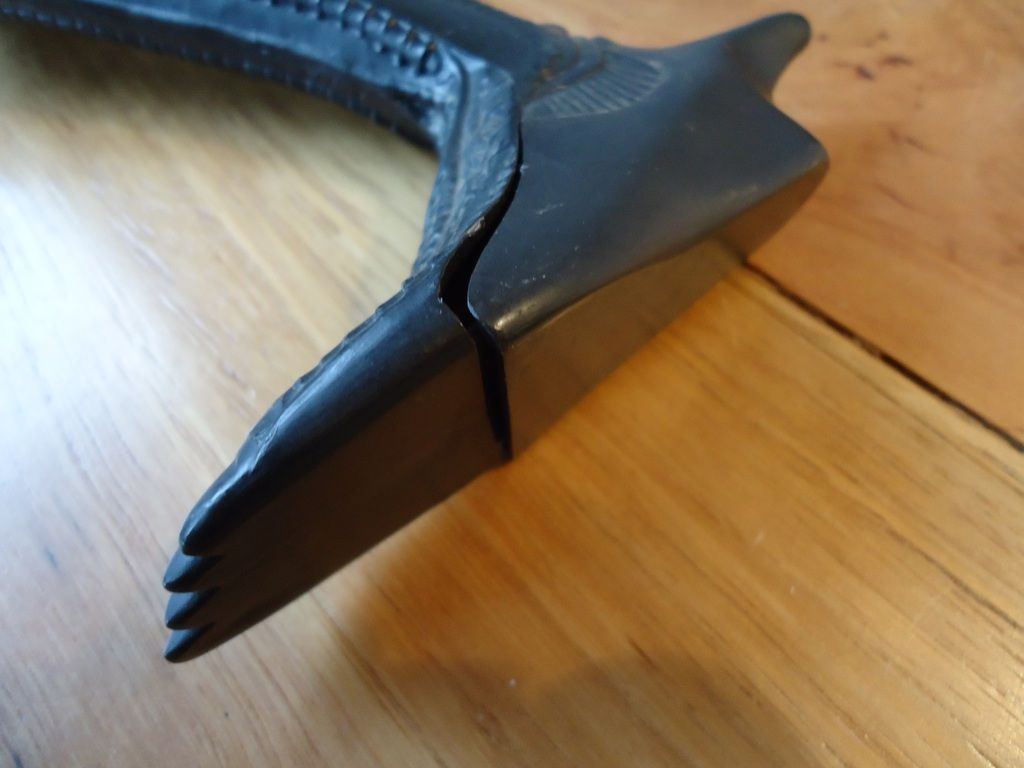
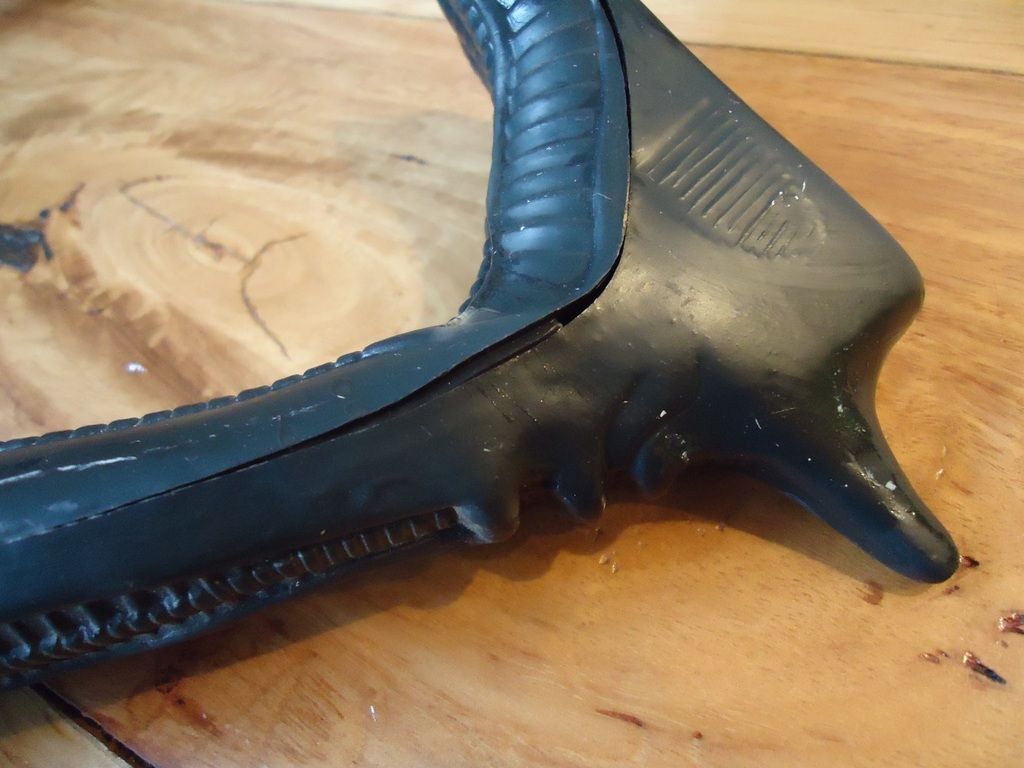
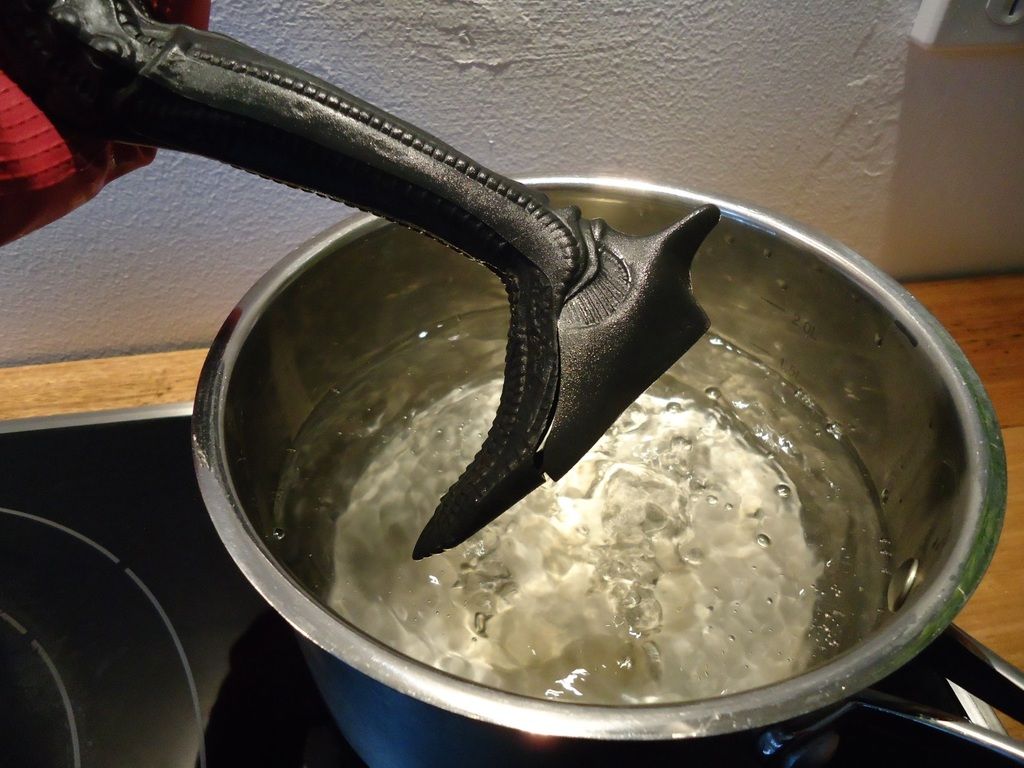
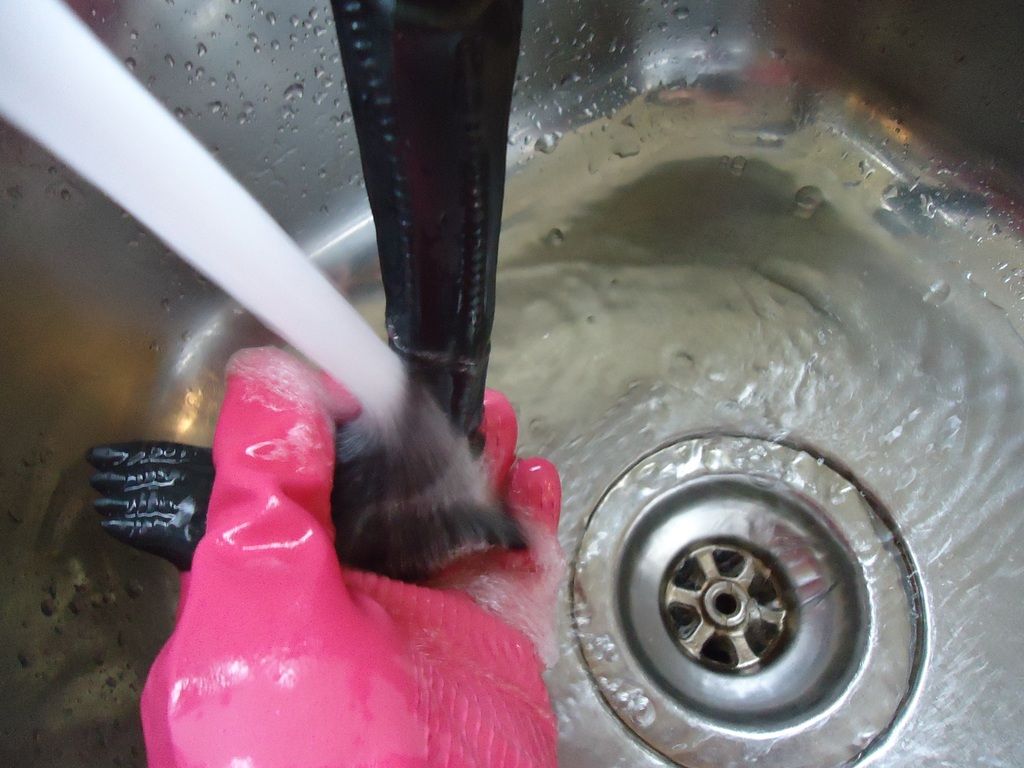
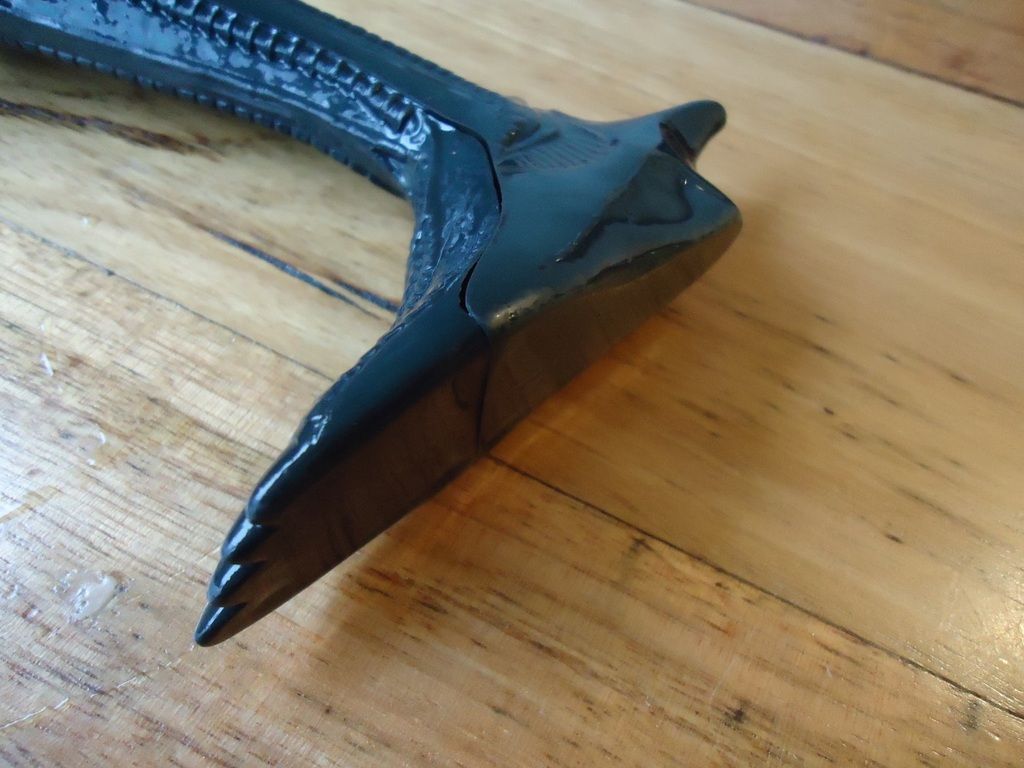
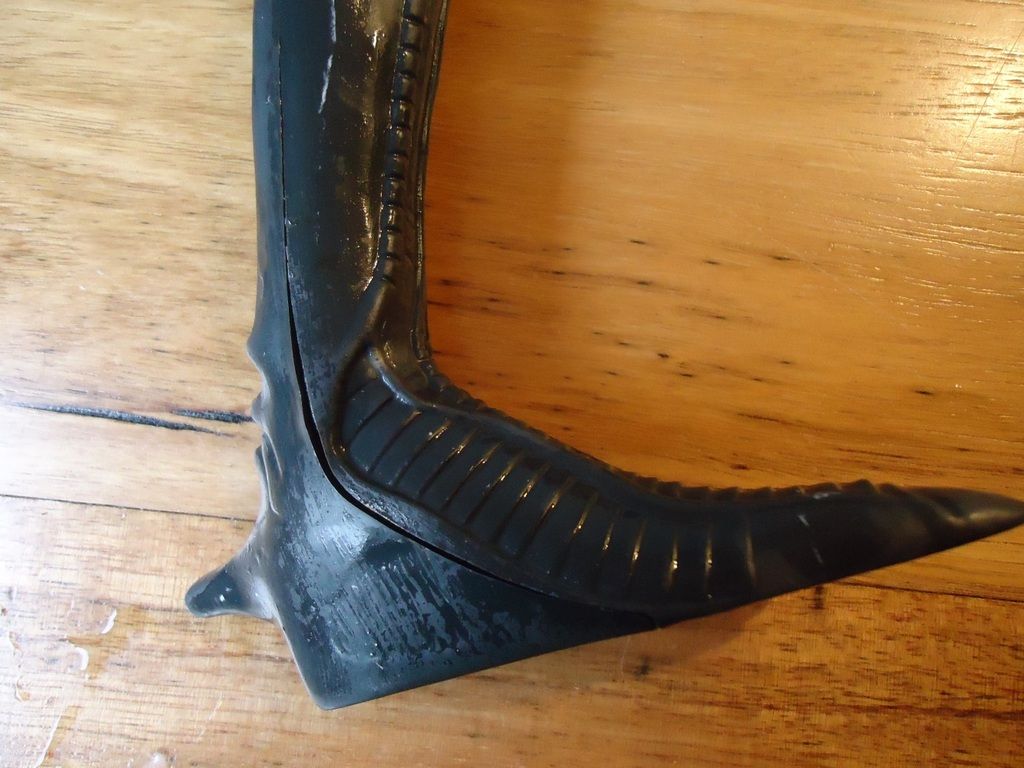

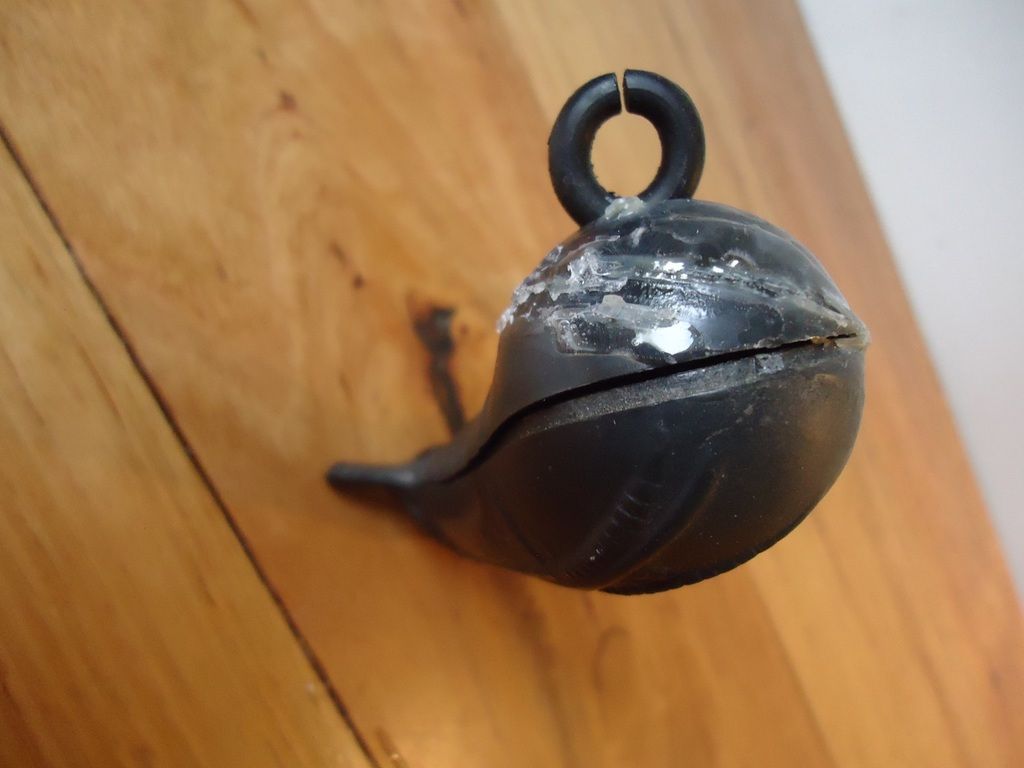
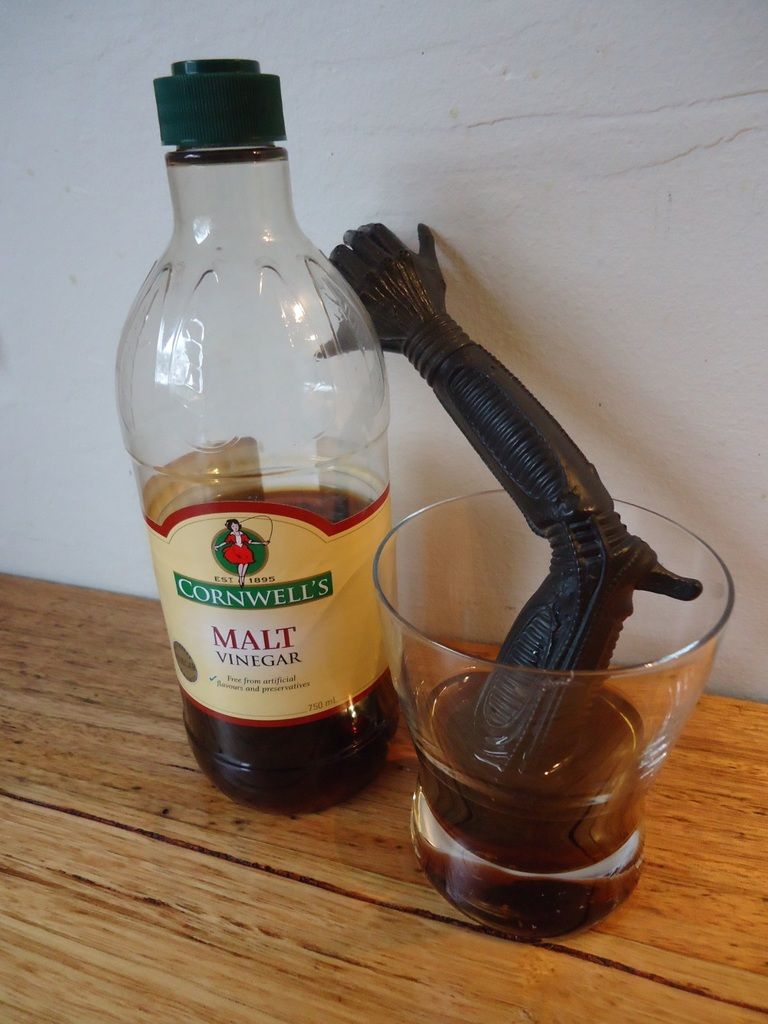

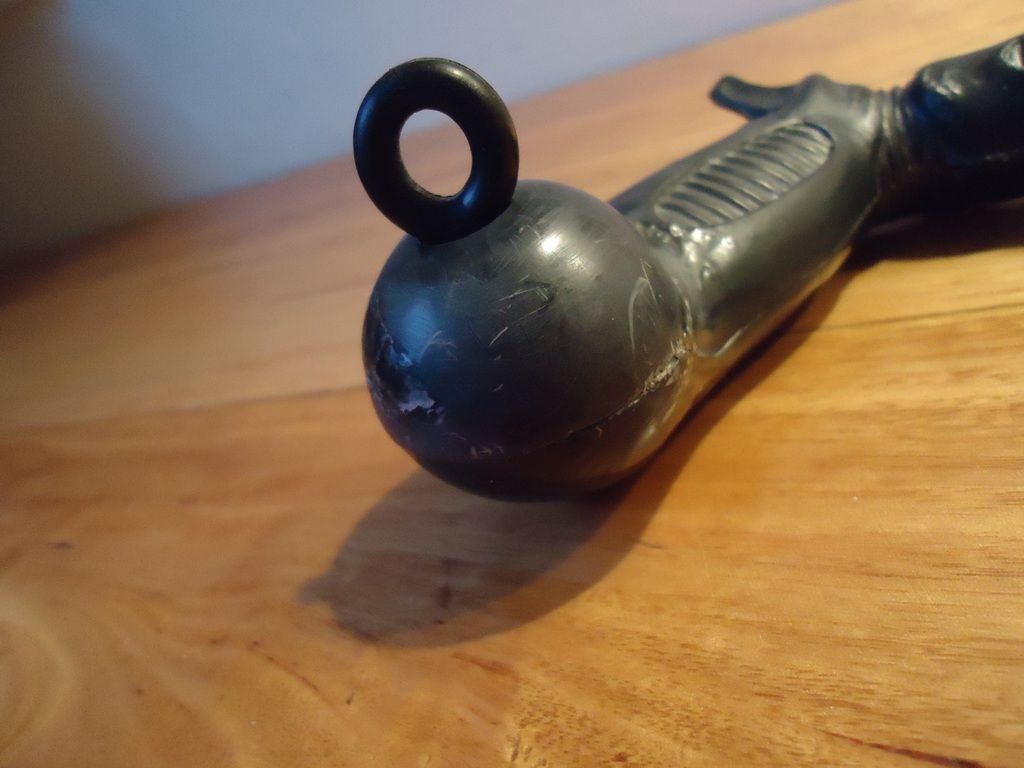




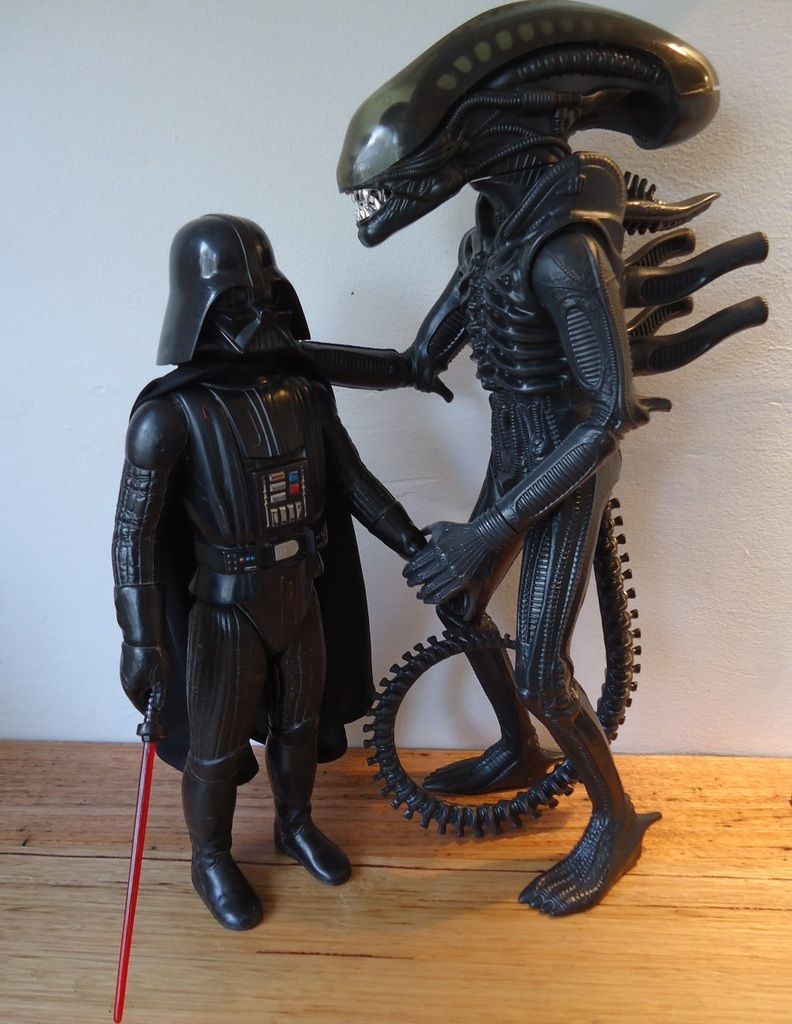

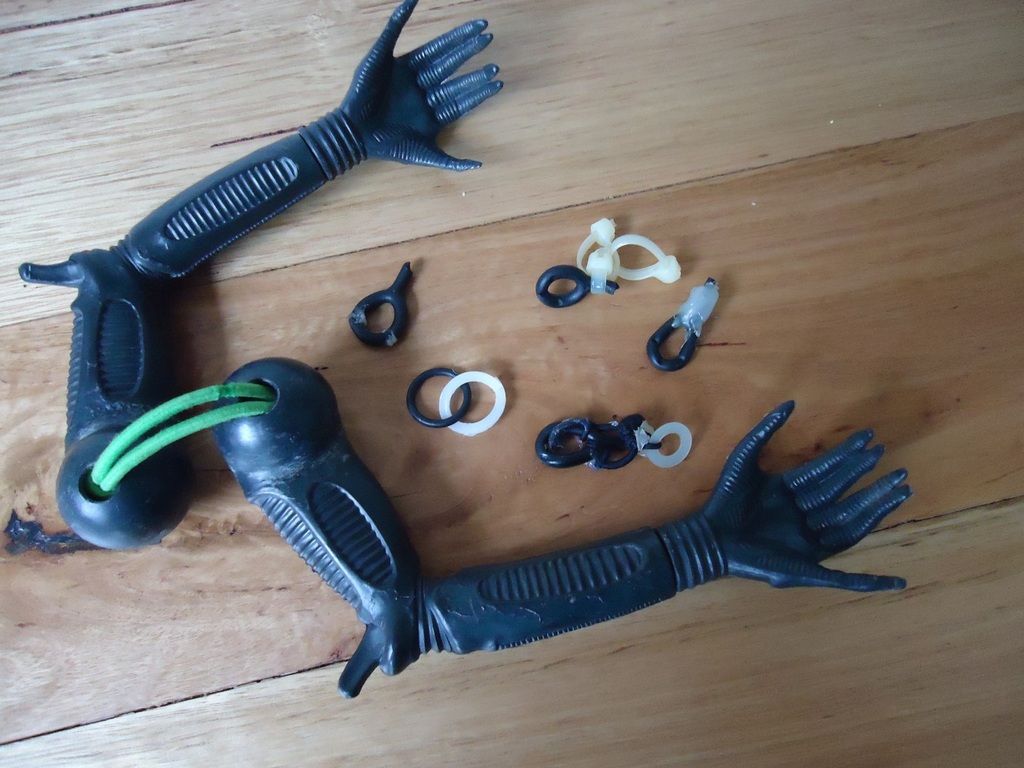
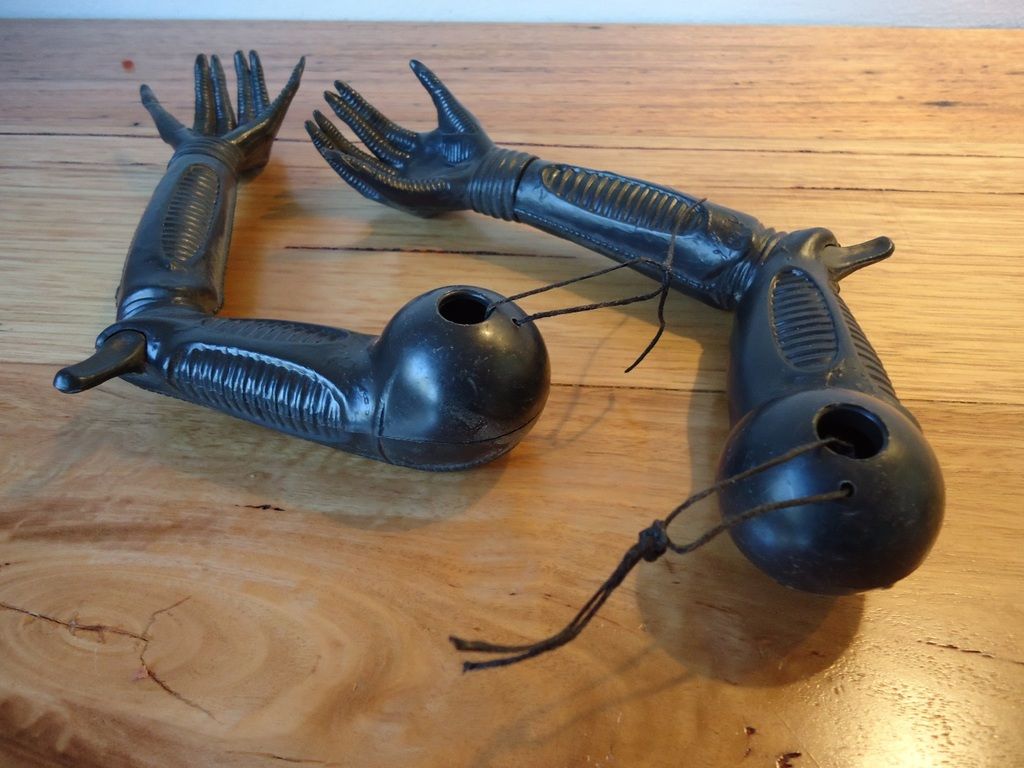
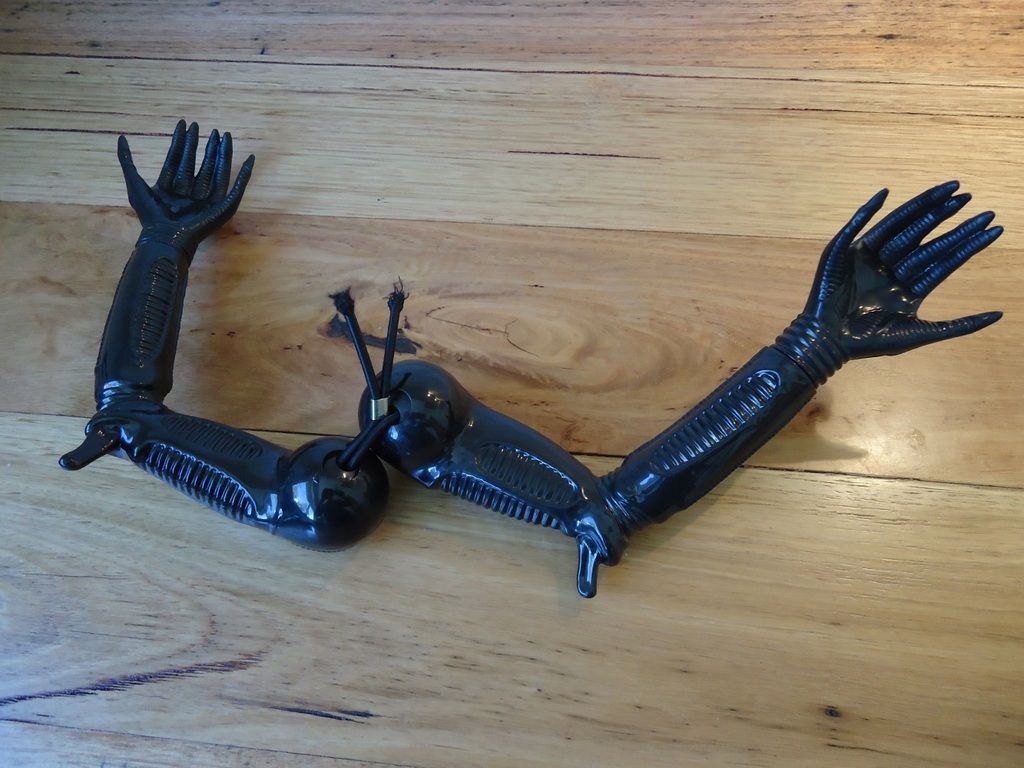
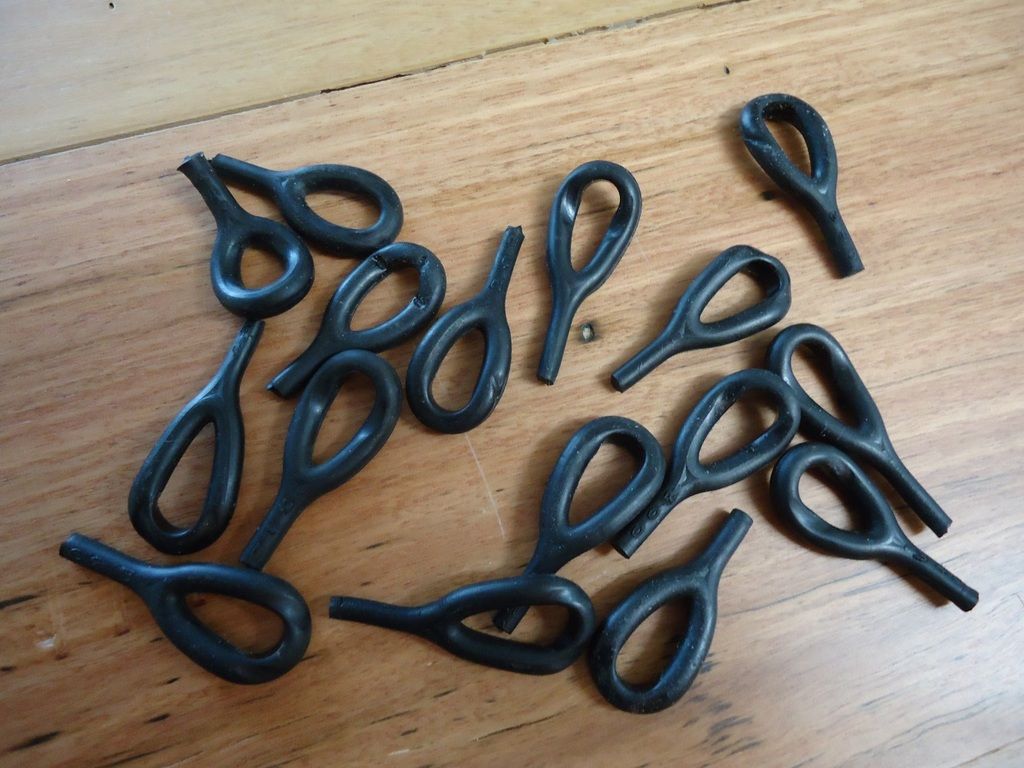

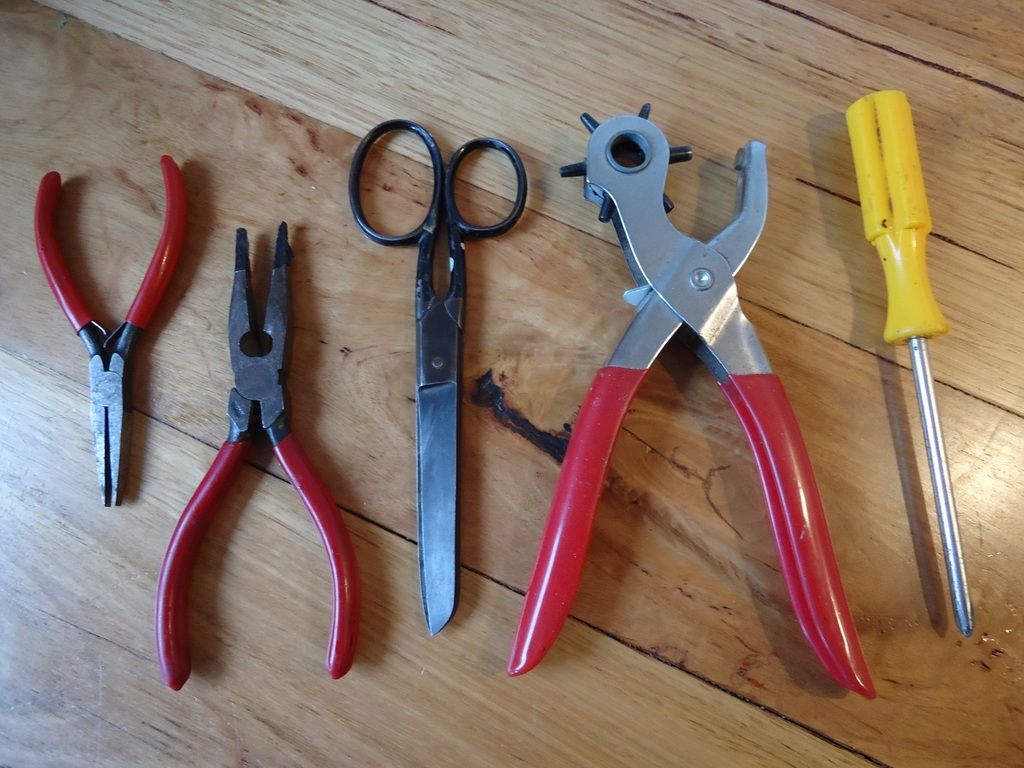
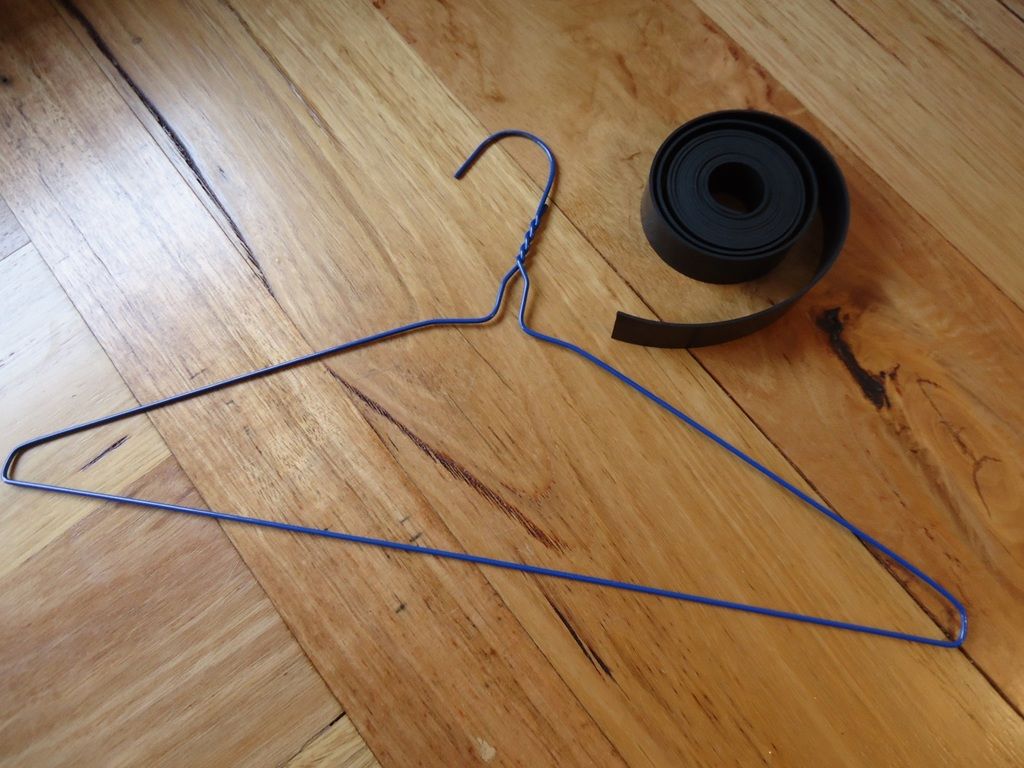
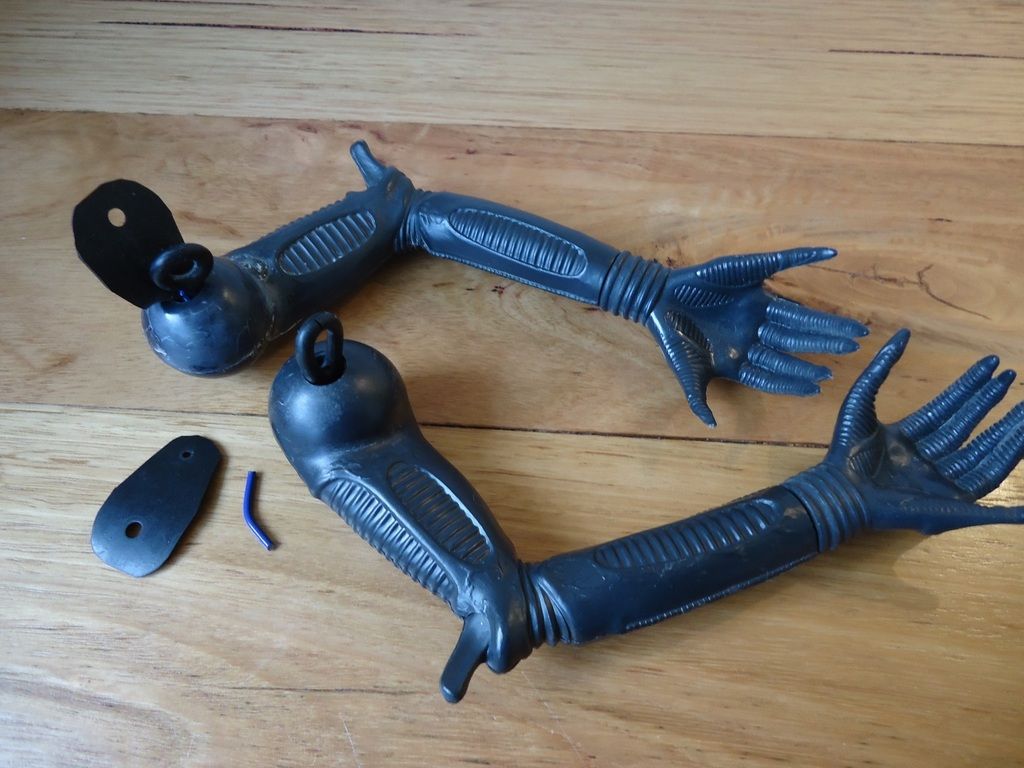
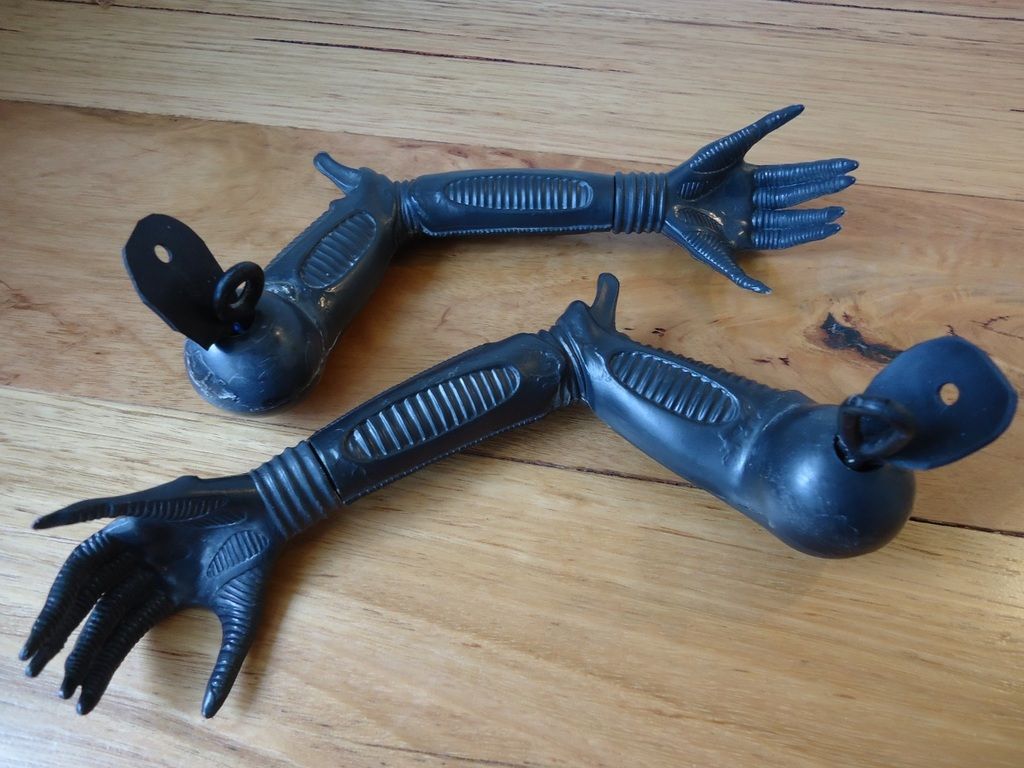


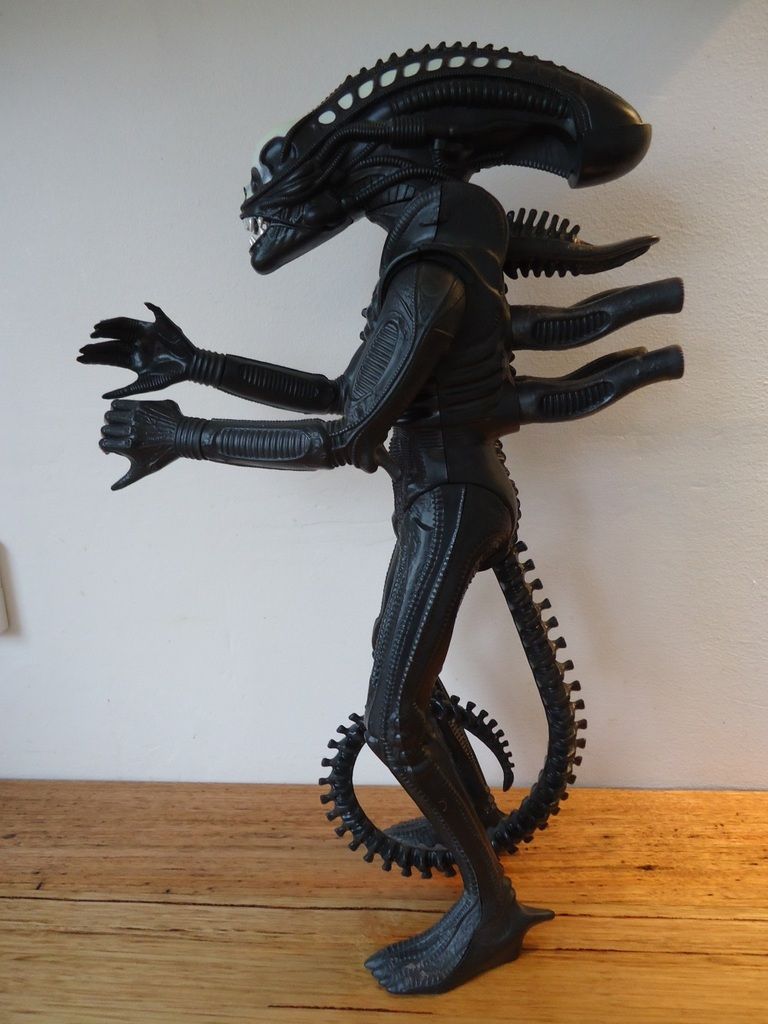
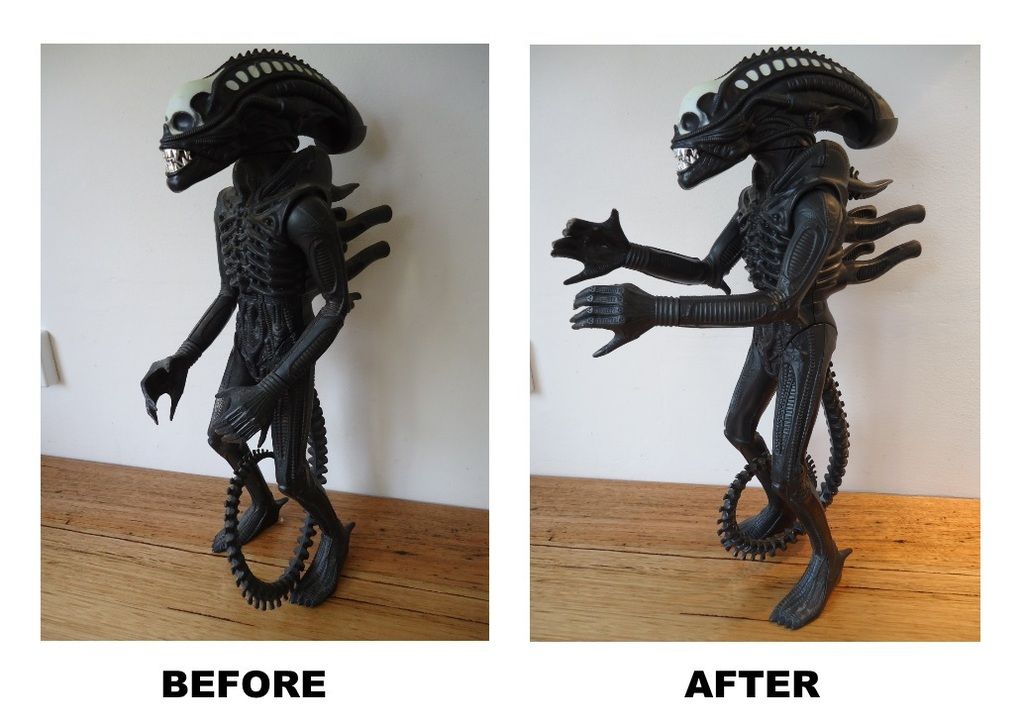
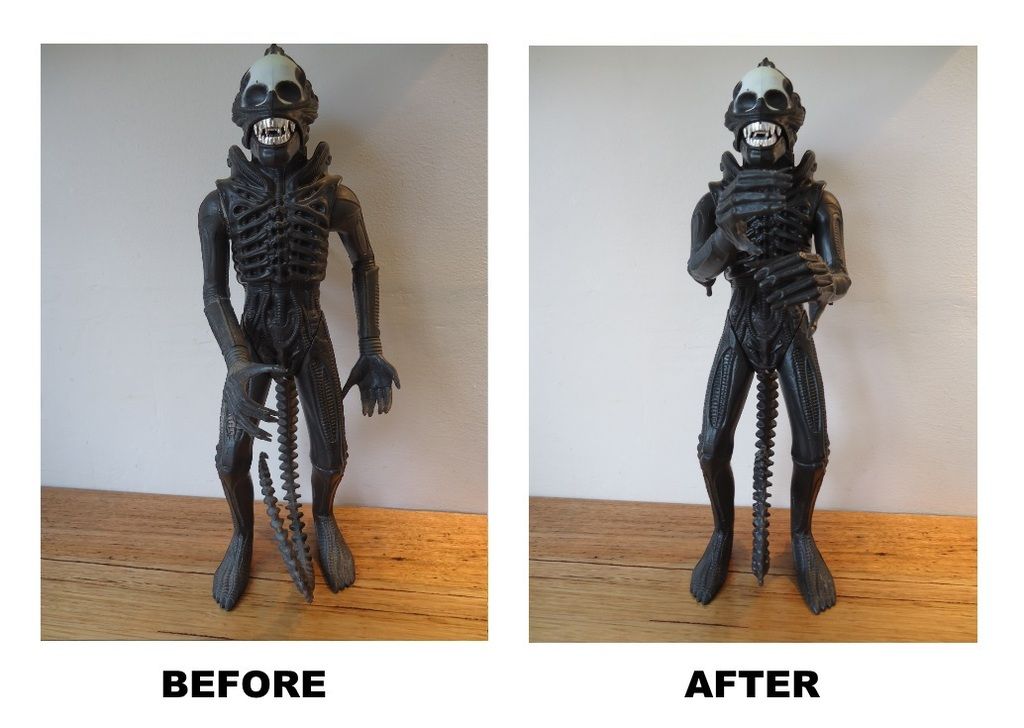


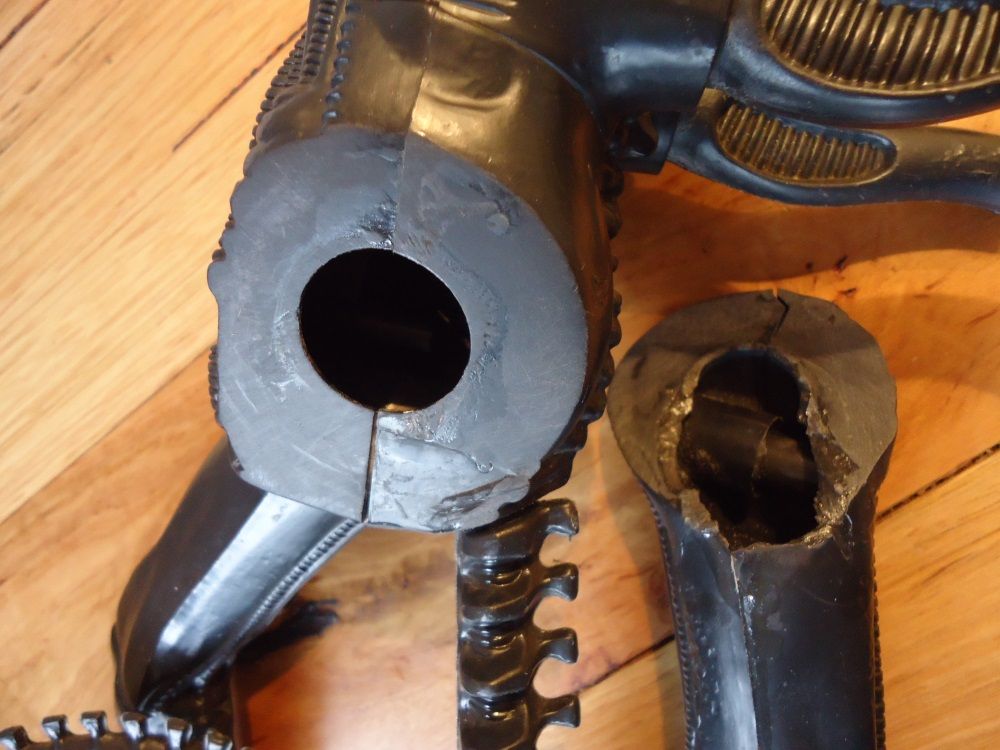

Comment